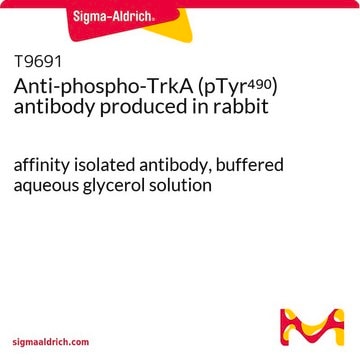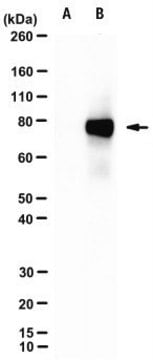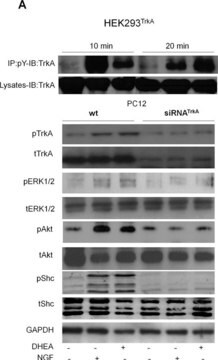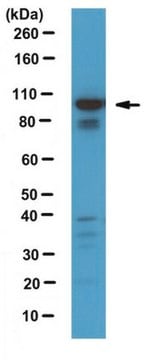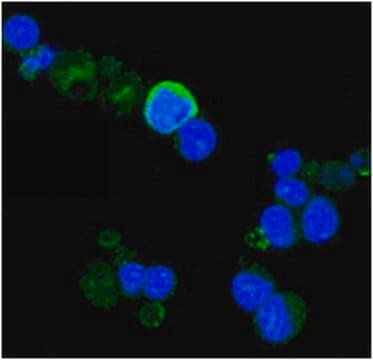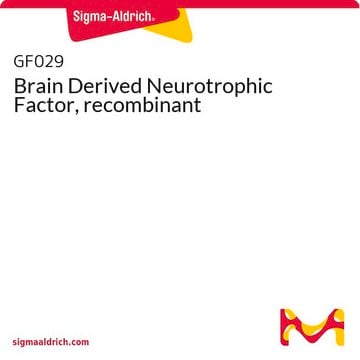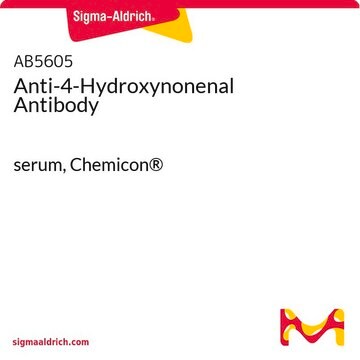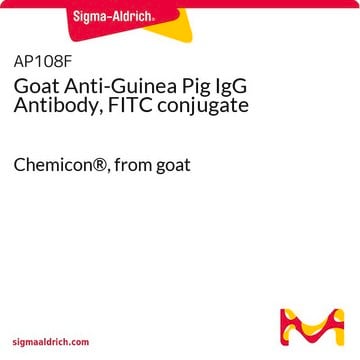ABN1383
Anti-phospho-TrkA (Tyr794) Antibody
from rabbit, purified by affinity chromatography
Synonym(s):
High affinity nerve growth factor receptor, Neurotrophic tyrosine kinase receptor type 1, Slow nerve growth factor receptor, p140-TrkA, Trk-A, phospho-TrkA (Tyr794)
About This Item
Recommended Products
biological source
rabbit
Quality Level
antibody form
affinity isolated antibody
antibody product type
primary antibodies
clone
polyclonal
purified by
affinity chromatography
species reactivity
rat, human
species reactivity (predicted by homology)
mouse (based on 100% sequence homology)
technique(s)
immunocytochemistry: suitable
western blot: suitable
NCBI accession no.
UniProt accession no.
shipped in
wet ice
target post-translational modification
phosphorylation (pTyr794)
Gene Information
rat ... Ntrk1(59109)
General description
Specificity
Immunogen
Application
Neuroscience
Developmental Signaling
Immunocytochemistry Analysis: A representative lot detected PACAP-induced TrkA Tyr794 phosphorylation in cultured rat basal forebrain neurons (Courtesy of Dr. Moses V. Chao, Langone Medical Center, New York University).
Western Blotting Analysis: A representative lot detected NGF-stimulated Tyr794 phosphorylation of exogenously expressed human TrkA in PC12 cells (Rajagopal, R., et al. (2004). 24(30):6650-6658).
Western Blotting Analysis: A representative lot detected NGF-stimulated TrkA Tyr794 phosphorylation in cultured rat embryonic E18 septal neurons (Jeanneteau, F., et al. (2008). Proc Natl Acad Sci USA. 105(12):4862-4867).
Western Blotting Analysis: A representative lot detected NGF-dependent TrkA Tyr794 phosphorylation in cultured DRG neurons from E16.5 rat embryos (Arevalo, J.C., et al. (2006). Neuron. 50(4):549-559).
Immunocytochemistry Analysis: A representative lot detected PACAP38-induced TrkA Tyr794 phosphorylation in cultured rat basal forebrain neurons, as well as CGS 21680- and NGF-induced Tyr794 phosphorylation of exogenously expfressed human TrkA in serum-starved PC12 cultures (Rajagopal, R., et al. (2004). 24(30):6650-6658).
Immunocytochemistry Analysis: A representative lot detected NGF-stimulated TrkA Tyr794 phosphorylation in cultured DRG neurons from E16.5 rat embryos (Arevalo, J.C., et al. (2006). Neuron. 50(4):549-559).
Quality
Western Blotting Analysis: 2.0 µg/mL of this antibody detected phospho-TrkA (Tyr794) in 10 µg of NGF treated human TrkA-transfected PC12 cell lysate.
Target description
Physical form
Storage and Stability
Other Notes
Disclaimer
Not finding the right product?
Try our Product Selector Tool.
Storage Class Code
12 - Non Combustible Liquids
WGK
WGK 1
Flash Point(F)
Not applicable
Flash Point(C)
Not applicable
Certificates of Analysis (COA)
Search for Certificates of Analysis (COA) by entering the products Lot/Batch Number. Lot and Batch Numbers can be found on a product’s label following the words ‘Lot’ or ‘Batch’.
Already Own This Product?
Find documentation for the products that you have recently purchased in the Document Library.
Our team of scientists has experience in all areas of research including Life Science, Material Science, Chemical Synthesis, Chromatography, Analytical and many others.
Contact Technical Service